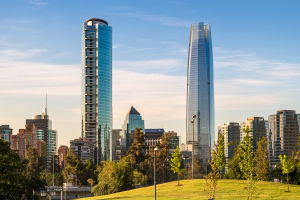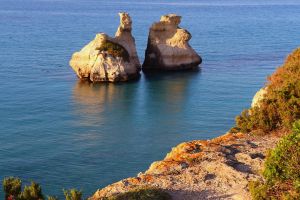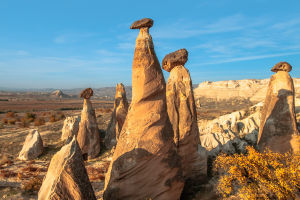Ayvalik is a picturesque town that extends onto a peninsula, fringed by numerous islands and intricate bays along it's coastline.
This vibrant harbor town, along with nearby Cunda Island, showcases a rich history marked by a once-thriving Greek community engaged in the olive oil trade until the 1923 population exchange.
In Ayvalik, you can admire some of Turkish finest examples of 19th-century Greek-style architecture, which is now being restored after years of neglect. Unlike the typical Ottoman houses that are tall and narrow with overhanging bay windows, the Greek structures in Ayvalik are built of stone, featuring classic triangular pediments atop square frames.
Top Beaches in Ayvalik
Sarimsakli Beach: Often favored by locals, Sarimsakli is renowned for it's gentle into the water, making it ideal for lengthy swims. This blue-flag certified beach boasts a variety of beach clubs and cafes, where visitors can rent umbrellas and sunbeds for a nominal fee.
Badavut Beach: Situated near Sarimsakli and essentially an extension of it, Badavut is equally popular among locals who appreciate its more pristine natural setting. Also a blue-flag beach, Badavut tends to be windier, yet this does not detract from a great swimming experience.
Paterica Bay/Beach: Known locally as Patrica or Patricia, this spot is a favorite for swimming in Cunda, resembling a natural swimming pool with its' crystal-clear waters.
Top Attractions in Ayvalik
Taxiarches Monument: The building, dedicated to the archangels Gabriel and Michael, now serves as a museum and cultural venue under the Rahmi M. Koç Museum and Culture Foundation, showcasing frescoes depicting the life of Jesus Christ and intricate marble designs.
Sevim Necdet Library: This unique spot, originally a mill, was transformed into a library and café, boasting a stunning view of the island and the sea.
Saatli (Clock) Mosque: Known for the distinctive clock on its tower, this mosque was originally built as a sacred site and converted post-exchange.
Cinarli Mosque: Cinarli Mosque is notable for it's three naves and apses and the impressive stone structure that once housed iconic relics.
Hayrettin Pasha Mosque: It offers a peek into the architectural and communal life of the era.
Hagiasma Panagia (Holy Spring): It attracts visitors of various faiths, drawn by stories of miraculous cures and its tranquil setting.
Historical Flour Mill: Situated on a hill, taking advantage of Cunda’s windy climate, this mill offers panoramic views of the surrounding area.
Seytan Sofrasi: This hilltop offers spectacular views of the surrounding islands, especially at sunset.
Adventure Activities in Ayvalik
Kitesurfing: The sport of kitesurfing is gaining popularity in Ayvalik, making it an exciting option for enthusiasts and beginners alike. Various courses are available, offering a great opportunity for visitors to try out or hone their kitesurfing skills against the scenic backdrop of Ayvalik.
Diving: Diving is another activity that's becoming increasingly popular in the region. With numerous diving spots scattered around the small islands off the coast, Ayvalik offers a unique chance for divers to explore underwater worlds. Whether you're an experienced diver or looking to dive for the first time, the clear waters and rich marine life make it a worthwhile endeavor.
Ayvalik Climate Overview
Ayvalik's climate offers a blend of the Marmara and Aegean regions, with mild winters that are warmer than Istanbul's and summers that are cooler than Izmir's. Rainfall is moderate, falling between the levels typically seen in Istanbul and Izmir. The warmest water temperatures occur in July and August, making these months popular for beachgoers.
Getting to Ayvalik
Ayvalik is accessible via Edremit Koca Seyit Airport, located about 45 kilometers away, roughly a 45-minute drive. For those driving from Istanbul, the journey covers approximately 400-450 kilometers and takes around 4 to 4.5 hours. From Izmir, it's about 170 kilometers, with travel times estimated at 2 hours. For local travel between Cunda and Ayvalik, minibusses are available, providing a convenient option.


